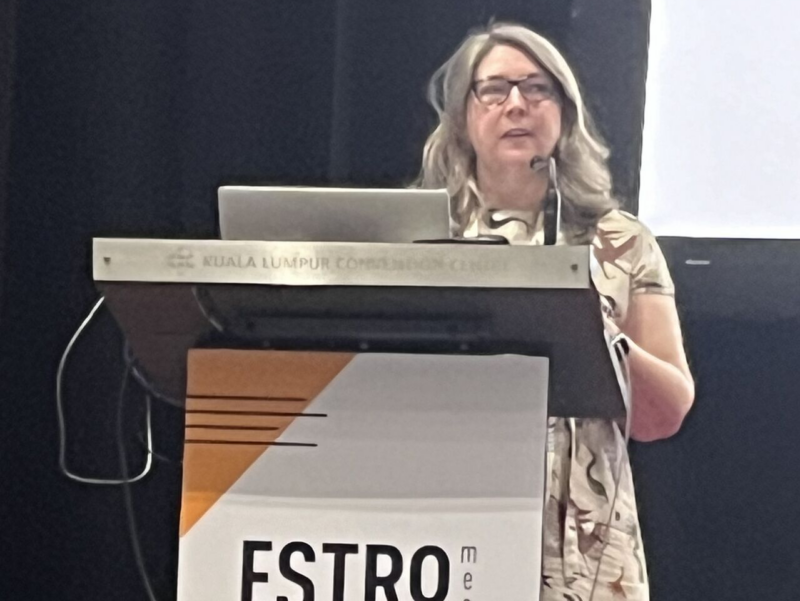Julie McCrossin shared a post on LinkedIn:
“A/Prof Caroline Wright from the Medical and Imaging Department at Monash University spoke this morning at the session on Immobilisation. Her topic was ‘Patient Comfort in Radiation Therapy’.
She posed a question that truly challenged me as a former patient, ‘Should comfort be overlooked to cure cancer?’ Comfort is defined to include physical, emotional and spiritual comfort.
You need to know that ‘not moving at all’ is very important during radiation treatment. The beam needs to hit the target cancer while doing as little damage as possible to surrounding tissue and critical structures.
My cancer tumour was in my head – back of tongue, tonsil, side of throat – hence I wore a rigid full-face mask. See the photo in comments.
Wearing this mask for 33 days alone in the bunker for 20 minutes each time, not including ‘set up’, was essential to my survival and, for me, traumatic.
For people with cancer in other parts of the body, there are many different methods of ‘immobilisation’, as it is called. It can sometimes include uncomfortable positions and some nudity. And claustrophobic containment.
So. Let’s consider that question again. ‘Should comfort be overlooked to cure cancer?’
I’ve posted PowerPoint slides from Caroline’s talk below so you can see her observations on this topic.
I applaud her view that cancer teams need to ‘enhance opportunities for Radiation Therapists to provide supportive care’. This needs staff time, training and a priority focus on each patient’s individual needs.
My view: Patient’s need to be involved in the decision making. Individual patients will have different views. Age and physical capacity to withstand the treatment and the postion needed to receive the treatment will influence the decision.
I had a powerful drive to live. I withstood very high levels of physical and psychological discomfort. But the team could have reduced my psychological pain with more support. And Radiation Therapists are there taking us into the bunker and immobilising us and delivering the treatment.
They should play a key role in emotional support as well as the physical care. Some do. Some don’t. We need consistency.
Making the Immobilisation Mask.
The Mask and What Helped During Treatment.”

Source: Julie McCrossin/LinkedIn
More posts by Julie McCrossin on oncodaily.com
Julie McCrossin, a former broadcaster with ABC Radio National, ABC TV, and Network Ten, is now a freelance journalist, broadcaster, and podcaster.
After being treated for stage four throat cancer in 2013, she became an Ambassador for Targeting Cancer and TROG Cancer Research. Julie hosts podcast series for Cancer Council NSW and Head and Neck Cancer Australia, focusing on cancer-related topics.
Caroline Wright is an Associate Professor in Medical Imaging and Radiation Sciences at Monash University and the Director of Education for the School of Primary and Allied Health Care. Her research focuses on health professions education, including online learning, simulation, and advanced healthcare practice.
In radiation therapy, she is involved in research on breast and prostate cancer, communication in cancer care, professional development, and advanced treatment techniques.
